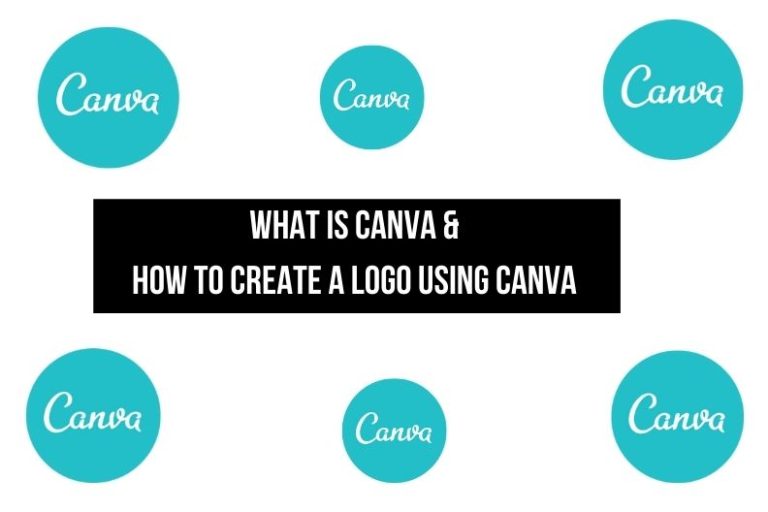How to Develop a Unique Brand Identity
Just like your personal identity makes you uniquely, your brand identity is what sets you apart from any other business out there.
Before I go into brand identity, I would like to clarify between a logo and a brand.
Logo vs. a Brand
In essence, a logo by itself is a graphic element that represents the brand. It is the visual shortcut to the trademark of the brand. A brand on the other hand is a combination of all tangible and intangible aspects that represent the organization. It is the foundation of a company. Without the brand, the logo wouldn’t have real meaning, it would be simply a graphical element. Thus, a logo identity system and a strong branding system are both crucial when marketing and promoting a consistent image and voice, but a brand speaks for itself.
What Is a Unique Brand Identity?
Brand identity refers to the visuals (visible elements) which represent the reputation and ideas of your brand. Brand identity is the visible elements of a brand, including color, design, and a brand’s logo.
It is what makes a company noticeable, making it the core of a good marketing strategy.
A brand is unique due to its identity.
What Makes Up a Brand Identity?
Brand identity includes logos, typography, colors, packaging, and messaging.
Importance of Brand Identity
Brand identity complements and reinforces the existing reputation of a brand.
It further attracts new customers to a brand while making existing customers feel at home.
How Do I Make My Brand Stand Out?
Establishing a strong brand identity is key to your success because your brand is the first thing your customers will think of when they consider making a purchase. A strong brand identity:
- highlights the best attributes of your business and can help drive sales for your business.
- Projects the expectations and promises you extend to your customers in terms of quality, service, reliability, and trustworthiness.
- Communicates your business personality and shapes your clients’ perceptions of who you are.
- Creates trust and loyalty from those who do business with you.
6 Components of a Well-developed Brand Identity
Creating a brand identity is a crucial first step in marketing yourself or your business. It is therefore important that you consider these six components in order to develop a well-developed brand identity:
Research Your audience, Positioning, and Name
Create Target Audience Personas.
Finding a target audience means discovering what kind of people are most likely to be interested in your service or product. A target audience is a group of consumers within a predefined target market that has been identified as the best recipients for a particular marketing message.
To create target audience personas, it is important to ask the questions below:
- What’s their age?
- What kind of values do they have?
- What do they like or dislike?
- Do they live mostly in the city or the suburbs?
Create a Clear Unique Value Proposition(UVP).
Also known as a unique selling proposition (USP), your UVP is a clear statement that describes the benefit of your offer, how you solve your customer’s needs and what distinguishes you from the competition.
Your unique value proposition should appear prominently on your landing page and in every marketing campaign.
What Makes a Good UVP?
Your value proposition should:
- describe; how your product or service solves/improves problems, what benefits customers can expect.
- paints a clear picture of what your brand has to offer for prospects.
- summarizes why a customer would choose your product or service from you over your competitors.
- highlight what makes you different from competitors, but it should always focus on how customers define your value.
Brand Name
If you are branding yourself and your own skills and talents – let’s say you’re an illustrator or freelance graphic designer-your own name will make a good brand name. If your brand has more than one founder or you just want an original name, think of what you want to accomplish with the brand.
Below are some tips to help you find a good brand name:
- Conduct a thorough Internet search to make sure the name is not in use.
- Avoid hard-to-spell names as it will be hard for referrals.
- Get the .com domain name. It will help with ranking on search engines in the future.
- Use a name that conveys some meaning: It should communicate your brand essence, conjures an image, and cultivates a positive emotional connection.
- Conduct a thorough trademark search using trademark search from international organizations such as the World Intellectual Property Organization in order to leverage the power of digital branding without violating others’ intellectual property rights.
Pick Your Brand’s Tone and Voice
There is a need to keep a consistent voice when you connect, advertise, or embody on social media and other online platforms. Your prospects must be able to recognize your brand by reading or hearing your message both online or offline.
You should be able to integrate your brand within your community and provide quality content because your content is your brand online.
It is important to craft your tone/language to match your brand’s personality at all times. For example, if yours is a high-end brand, then you should use more professional language.
Laid-back brands on the other hand use a more conversational language. These should be integrated throughout the entire business.
Design Your Individual Elements
Colors
The colors of your brand are a reflection of your brand identity. It is thus important to identify what your brand is about so you can align it with relevant colors. Before you pick colors, it is very important to embrace color theory to understand what colors mean. Thereafter, pick your primary and secondary colors.
Primary colors are colors that cannot be made by mixing any other two colors. There are three primary colors: red, yellow, and blue. Secondary colors are created by mixing two secondary colors. For instance, when you mix blue and yellow (two primary colors), you get green (a secondary color).
The color scheme you’ll assemble for your brand will play a key role across your various marketing assets – from building a website to the design of your logo, and much more. Thus, employing brand colors consistently and across all platforms can result in a unified look-and-feel to your company, making them memorable and recognizable.
Typography
In essence, typography is arranging text in an engaging, interesting, and legible way that gets the message across most appropriately. It includes the layout, spacing, sizes, hierarchy, color, and integration of type across a variety of mediums.
The typography you choose will say a lot about your brand. The most obvious element of typography is font choice because your brand’s personality is expressed in the fonts used to present its name and tagline in your logo. It is therefore important to understand the personality traits of each font category.
Logo
A logo is a vital element in the branding process, the only element that makes brand identity strong (interesting form). A good logo is distinctive, appropriate, practical, graphic, and simple in form, and it conveys the owner’s intended message.
Brands often choose a clean and minimalist style to communicate how fresh and modern they are. A design that conveys the essence of your brand. A logo should deliver an immediate and honest impression of your business philosophy, conveying why your brand is special.
Below are some tips to consider when designing a logo:
- Do a reverse image search of your new logo on Google.
- Search your industry for similar logos.
- Consult an attorney to see if your logo is already taken.
The Brand Design System
A Brand Design System refers to how design elements work together to visualize a brand, however, it is more than just visual presentation; it focuses on the ecosystem. They include colors, fonts, logos, messaging, brand attributes, etc. Combined, they make a meaningful unit and they allow all your communication to speak in one consistent voice.
What Makes a Good Brand Design System?
Irrespective of the tools used to create it, a good brand design system is one that is reusable, robust, and well-documented. Most importantly, a good design system helps make the design process more efficient, and ultimately, more cost-effective.
What is the Importance of a Brand Design System?
A design system helps everyone in your business to maintain brand consistency. They are heavily utilized by design and marketing teams though.
Photography
One of the most essential parts of your branding is photography. This is especially true for brands whose communications rely heavily on the use of photography, as opposed to illustration or infographics.
It is important to choose photographs that are both creative and in line with your industry so viewers can get a sense of what you do and how. Additionally, you need quality images that help convey what your business is about, right when they click onto your site.
Web Design
A good website can bring you more business and a bad one can drive away prospective customers. Thus, you should therefore carefully consider what your potential customers are going to want from your website. A new visitor to your site is likely to visit your home page. Thus your homepage elements must have very specific purposes, helping your target audience get to know your business.
Advertise
Introduce your brand to the world. Promoting your brand correctly will help you deliver a positive brand image to consumers and ensure long-term success. The overall goal is to be seen and heard by your target audience.
One of the powerful platforms to leverage the power of advertising is Social Media. Social media advertising is quickly becoming the new standard and it’s difficult not to see why since it offers many benefits for the advertiser, such as the ability to reach specific consumer targets. Tell stories that move them emotionally and to action.
Remain Consistent
Consistency between online and offline is very important in maintaining a brand identity. This can be achieved through keeping the same colors, typography (same typeface and typestyle), documents (print and digital), theme, and message whenever connecting to your target audience either online or offline.
Consistency does not mean one cannot change the brand identity if there is a need. In the modern world, flexibility is a necessity, even in brands. Just be consistent. If you change the site font, for example, make changes elsewhere.
Remaining consistent may be a challenge, especially when many people are involved. Creating brand guidelines is the solution. The guidelines must stipulate the dos and don’ts of your brand, clear and concise. This will help your marketing teams and content creators to remain brand compliant. They will know what to say and use appropriate language and visuals whenever promoting your brand.
Lastly, don’t be tempted to copy competitors. It will take away or mess up your effort to remain consistent. Just take what they do into account, put your own twist on it, and make your business stand out in your industry even more.
Most importantly – Monitor your brand
You worked hard to create your brand. You designed a logo, wrote a tagline, defined your audience, invested so much time and money. It is only fair that you protect and maintain your brand identity. This can be achieved through Brand monitoring.
Brand monitoring is the process of monitoring various channels to find mentions of your brand and assessing what is being said about it. This could include using google analytics, surveys, comments, social media discussions, to get a sense of how people talk about your brand and interact with it. The purpose is ultimately to be able to respond and act on these mentions and implement changes as needed (correct mistake) to improve brand identity. Overall, brand monitoring helps you to stay up-to-date with the latest trends without using up too much of your resources.
Fortunately, there are a number of tools to help you out that allow you to do brand monitoring and manage your social media profiles from one place such as:
Google Alerts
Google Alerts is a much simpler tool than other brand monitoring tools, which has its advantages and disadvantages. It’s also easy to use. Enter the keyword you want to monitor into the search bar and enter your email address.
Social Mention
Social Mention is a simple, useful tool for monitoring and tracking social media. It’s a social media monitoring tool that allows you to track and measure what people are saying about your brand on Instagram, Twitter, Facebook, YouTube, and news sites, blogs, and forums.
This powerful tool also provides some analytics you could use to boost your business, for example, reach, sentiment analysis, top keywords, top users, top hashtags, and sources.
By using these two brand monitoring tools, you will be able to regularly and strategically track and investigate the performance of the online and media.








![How to Create a Blog for Affiliate Marketing [Beginners Guide] How to Create a Blog for Affiliate Marketing [Beginners Guide]](https://createandleave.com/wp-content/uploads/2024/06/Quality-Affiliate-Content.jpg)
![How to Increase Brand Awareness Successfully [Strategy] How to Increase Brand Awareness Successfully [Strategy]](https://createandleave.com/wp-content/uploads/2020/08/brand-awareness-768x512.png)


